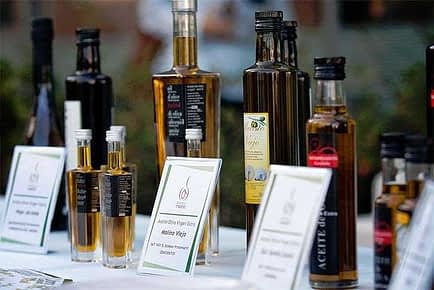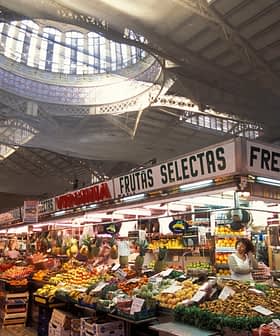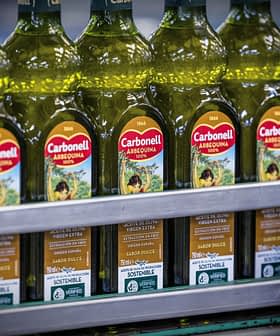For the past few weeks, 50 restaurants from the city of Madrid and the surrounding areas have offered special dishes featuring extra virgin olive oils from the region, with the aim of increasing awareness of the product among fellow restaurateurs and diners.
The 1st Gastronomic Conference of Oil In Madrid was inaugurated October 4 by Minister of Environmental and Spatial Planning, Borja Sarasola who explained the objective of the conference was not only to help the general public to discover and appreciate the oils from the area, but also to facilitate meetings between producers and restaurants in order to create new business opportunities.

The Minister of Environment and Spatial Planning, Borja Sarasola, I opened the oil Gastronomic Madrid.
Customers will have the opportunity to taste extra virgin olive oils from six local mills that are participating in the event, in a variety of dishes especially prepared to highlight the star ingredient.
This gastronomic initiative is part of the Program of Food Promotion, falling under the “Know Madrid” section of the program, which aims to increase the value placed on local food products.
The Madrid region is a sizable player in Spanish olive oil production, hosting some 25,000 acres of olive groves, and producing around 29,000 tons of olives per year resulting in 6,300 tons of oil from its 21 mills. The majority of olive crops are located in the regions of Las Vegas, Campiña y Sur Occidental, which produce 97 percent of the total harvest, much of which is extracted using ecological techniques.
Olive tree cultivation plays an important role in the community of Madrid, not only for the resulting high quality gastronomic products, but also for environmental benefits. Olive trees help to protect soil from erosion, maintain the landscape and absorb CO2 emissions, playing a vital role in rural development in the region.
Madrid extra virgin olive oils are known for their high quality and characterized by low acidity, an intense bright yellow and greenish color and a fragrant aroma. Of particular note is the “Aceite de Madrid” which is a blend made from a number of different regional olive varieties including Cornicabra (60%), Chamomile (32%), Verdeja (3%), Picual (2%) and Carrasqueña (1%) from 97 municipalities of the Community of Madrid. The brand boasts a 79 percent content of oleic fatty acids. This results in oxidative stability and hence good shelf stability.









